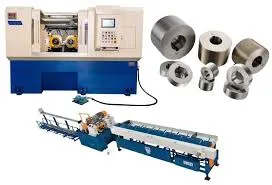
-
 Afrikaans
Afrikaans -
 Albanian
Albanian -
 Amharic
Amharic -
 Arabic
Arabic -
 Armenian
Armenian -
 Azerbaijani
Azerbaijani -
 Basque
Basque -
 Belarusian
Belarusian -
 Bengali
Bengali -
 Bosnian
Bosnian -
 Bulgarian
Bulgarian -
 Catalan
Catalan -
 Cebuano
Cebuano -
 Corsican
Corsican -
 Croatian
Croatian -
 Czech
Czech -
 Danish
Danish -
 Dutch
Dutch -
 English
English -
 Esperanto
Esperanto -
 Estonian
Estonian -
 Finnish
Finnish -
 French
French -
 Frisian
Frisian -
 Galician
Galician -
 Georgian
Georgian -
 German
German -
 Greek
Greek -
 Gujarati
Gujarati -
 Haitian Creole
Haitian Creole -
 hausa
hausa -
 hawaiian
hawaiian -
 Hebrew
Hebrew -
 Hindi
Hindi -
 Miao
Miao -
 Hungarian
Hungarian -
 Icelandic
Icelandic -
 igbo
igbo -
 Indonesian
Indonesian -
 irish
irish -
 Italian
Italian -
 Japanese
Japanese -
 Javanese
Javanese -
 Kannada
Kannada -
 kazakh
kazakh -
 Khmer
Khmer -
 Rwandese
Rwandese -
 Korean
Korean -
 Kurdish
Kurdish -
 Kyrgyz
Kyrgyz -
 Lao
Lao -
 Latin
Latin -
 Latvian
Latvian -
 Lithuanian
Lithuanian -
 Luxembourgish
Luxembourgish -
 Macedonian
Macedonian -
 Malgashi
Malgashi -
 Malay
Malay -
 Malayalam
Malayalam -
 Maltese
Maltese -
 Maori
Maori -
 Marathi
Marathi -
 Mongolian
Mongolian -
 Myanmar
Myanmar -
 Nepali
Nepali -
 Norwegian
Norwegian -
 Norwegian
Norwegian -
 Occitan
Occitan -
 Pashto
Pashto -
 Persian
Persian -
 Polish
Polish -
 Portuguese
Portuguese -
 Punjabi
Punjabi -
 Romanian
Romanian -
 Russian
Russian -
 Samoan
Samoan -
 Scottish Gaelic
Scottish Gaelic -
 Serbian
Serbian -
 Sesotho
Sesotho -
 Shona
Shona -
 Sindhi
Sindhi -
 Sinhala
Sinhala -
 Slovak
Slovak -
 Slovenian
Slovenian -
 Somali
Somali -
 Spanish
Spanish -
 Sundanese
Sundanese -
 Swahili
Swahili -
 Swedish
Swedish -
 Tagalog
Tagalog -
 Tajik
Tajik -
 Tamil
Tamil -
 Tatar
Tatar -
 Telugu
Telugu -
 Thai
Thai -
 Turkish
Turkish -
 Turkmen
Turkmen -
 Ukrainian
Ukrainian -
 Urdu
Urdu -
 Uighur
Uighur -
 Uzbek
Uzbek -
 Vietnamese
Vietnamese -
 Welsh
Welsh -
 Bantu
Bantu -
 Yiddish
Yiddish -
 Yoruba
Yoruba -
 Zulu
Zulu
Popular Varieties of Thread Rolling Machines and Their Applications
Famous Types of Thread Rolling Machines
Thread rolling machines have become an essential tool in the manufacturing industry, particularly for creating threads on various types of metal components. These machines offer a method of producing high-precision threads without the need for cutting, thereby reducing waste and improving efficiency. In this article, we will explore some of the most famous types of thread rolling machines and their applications.
1. Flat Die Thread Rolling Machines
One of the most common types of thread rolling machines is the flat die thread rolling machine. This machine uses two flat dies that are mounted parallel to each other. As the workpiece is fed between the dies, they exert pressure, gradually forming the threads of the desired profile. Flat die machines are typically used for producing external threads on cylindrical parts such as bolts and screws. They are particularly popular in industries where high-volume production is necessary due to their speed and efficiency.
2. Reciprocating Thread Rolling Machines
Reciprocating thread rolling machines are designed to create threads by reciprocating the workpiece between rotating dies. This method allows for the formation of complex thread geometries, making it ideal for applications that require a variety of thread types, including both external and internal threads. Reciprocating machines are known for their versatility and can be calibrated to produce a range of sizes and thread profiles, which is beneficial for manufacturers looking to produce custom designs.
3. Rotary Thread Rolling Machines
famous types of thread rolling machine

In rotary thread rolling machines, the workpiece is rotated while it is pressed against the dies, which are held in a fixed position. This type of machine is particularly effective for producing long threads, as the continuous rotation allows for the uninterrupted formation of threads over extended lengths. Rotary machines are widely used in the automotive and aerospace industries, where precision and strength are paramount. With their ability to produce threads that are more uniform and stronger than those created by traditional cutting methods, they have gained a reputation as a preferred choice for high-stress applications.
4. Parallel Thread Rolling Machines
Parallel thread rolling machines operate using two or more parallel dies that move in tandem to form threads on the workpiece. This design allows for increased efficiency and higher output rates, making it suitable for mass production. These machines are often utilized in manufacturing various fasteners and components, such as studs and fittings, where consistent quality and dimensional accuracy are critical.
5. Multi-Station Thread Rolling Machines
Multi-station thread rolling machines take efficiency to a new level by incorporating multiple rolling stations in a single setup. This design permits the simultaneous processing of several workpieces, significantly reducing production time. Multi-station machines are ideal for manufacturers looking to increase throughput while maintaining high standards of quality. They are particularly advantageous for mass production environments where quick turnaround times are essential.
Conclusion
The various types of thread rolling machines play a vital role in the production of threaded components across different industries. From flat die machines to multi-station systems, each type offers unique advantages tailored to specific manufacturing needs. As the demand for precision-engineered components continues to grow, the importance of thread rolling technology will undoubtedly remain significant, driving further advancements in this essential manufacturing process. These machines will continue to evolve, providing innovative solutions that meet the challenges of modern manufacturing.
